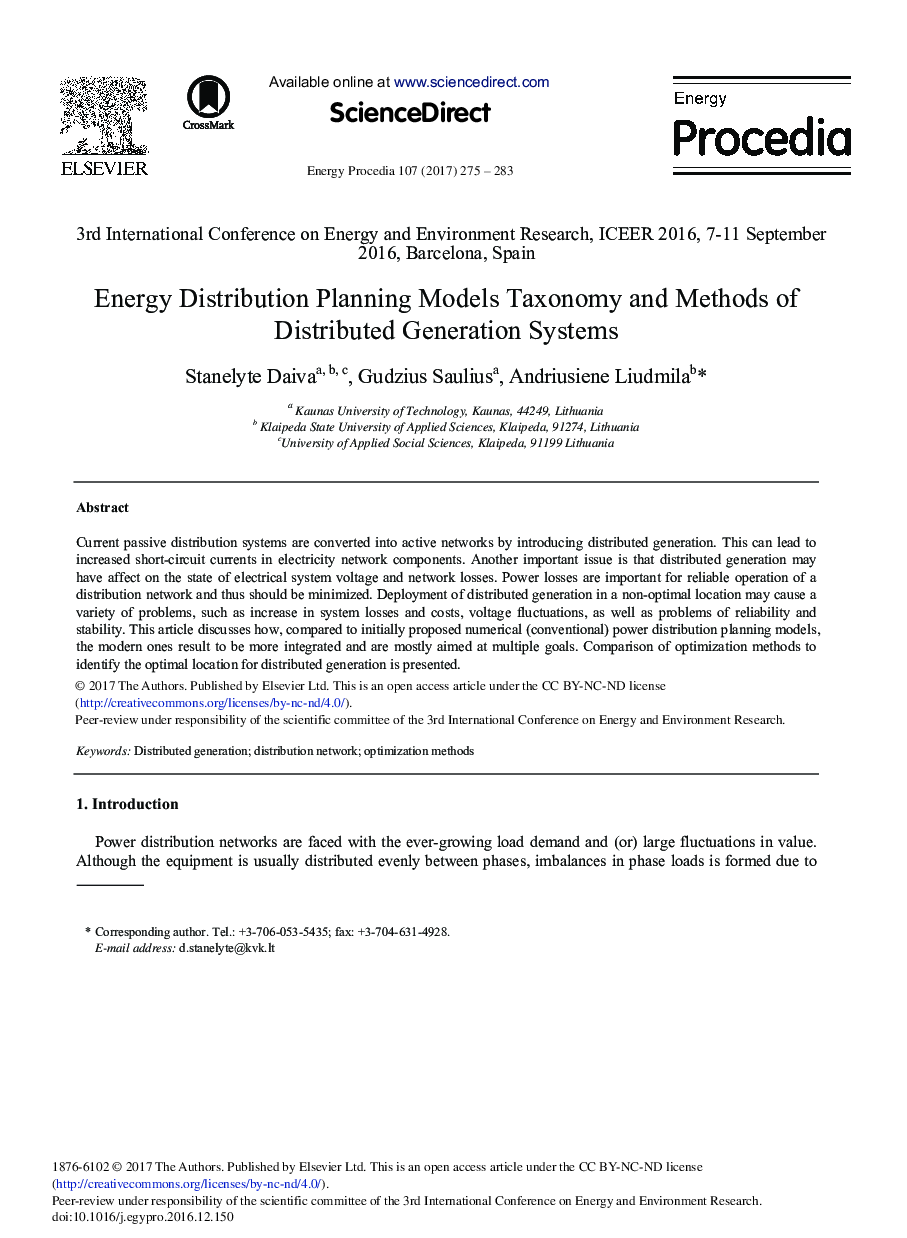| Article ID | Journal | Published Year | Pages | File Type |
|---|---|---|---|---|
| 5446201 | Energy Procedia | 2017 | 9 Pages |
Abstract
Current passive distribution systems are converted into active networks by introducing distributed generation. This can lead to increased short-circuit currents in electricity network components. Another important issue is that distributed generation may have affect on the state of electrical system voltage and network losses. Power losses are important for reliable operation of a distribution network and thus should be minimized. Deployment of distributed generation in a non-optimal location may cause a variety of problems, such as increase in system losses and costs, voltage fluctuations, as well as problems of reliability and stability. This article discusses how, compared to initially proposed numerical (conventional) power distribution planning models, the modern ones result to be more integrated and are mostly aimed at multiple goals. Comparison of optimization methods to identify the optimal location for distributed generation is presented.
Related Topics
Physical Sciences and Engineering
Energy
Energy (General)
Authors
Stanelyte Daiva, Gudzius Saulius, Andriusiene Liudmila,
